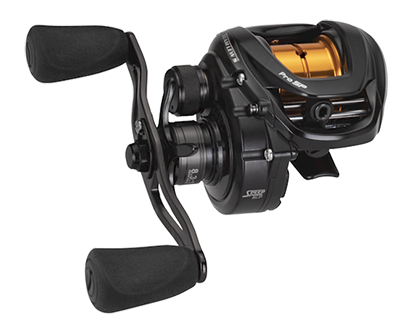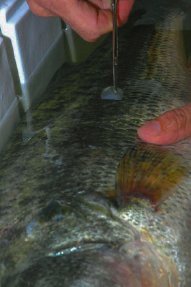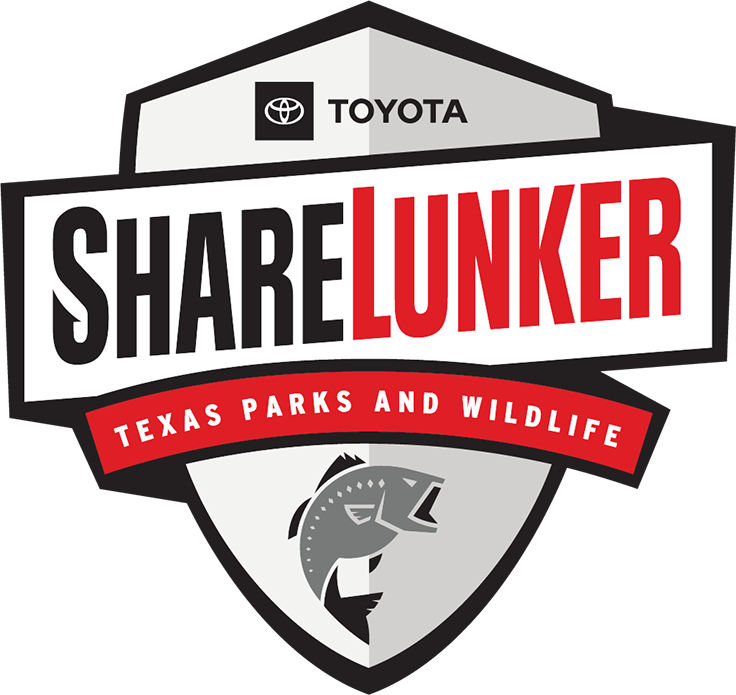Bigger Better Science
The Texas Parks and Wildlife Dept. biologists apply the most advanced scientific methods to make bass fishing bigger and better for our anglers.
Texas Parks and Wildlife Department management biologists collect data on bass populations during electrofishing surveys, but there is a bias with the gear and management teams do not sample the larger size class of bass in the proportion they are represented in the population. Biologist also supplement their data sets with creel surveys and tournament results. However, there are still groups of anglers that are catching big bass year-round, but data wasn’t being collected on these anglers’ catches.
In 2018, the Toyota ShareLunker program underwent expansion, deepening its partnership with anglers to gather extensive catch and genetic information about lunker bass throughout Texas.
With anglers submitting catch data on big bass, it allows management biologist to determine a reservoir’s lunker potential.
Why Taking a Genetics Sample is Important
Sending in a genetic sample from your Lunker can benefit the conservation and enhancement of trophy bass populations in Texas. And, it will contribute to scientific research and the overall understanding of Largemouth Bass genetics. It's a win-win for everyone.
Here's how sending in a genetic sample to the Toyota ShareLunker program can be valuable:
- Genetic Research: Genetic samples, such as fin clips or scales, from trophy-sized bass can provide important genetic information. This information can be used to study the genetic diversity, lineage, and relatedness of these exceptional fish. It can also help researchers understand the genetic factors that contribute to the growth potential and trophy size of Largemouth Bass.
- Parentage Analysis: Genetic samples can be used to determine the parentage of individual fish, helping researchers understand reproductive patterns, kinship relationships, and genetic contributions to the population.
- Breeding and Stocking Programs: The genetic samples collected through the ShareLunker program can be used in breeding programs to produce broodstock for stocking efforts. This can help enhance the genetic diversity of Largemouth Bass populations, improve trophy bass genetics, and ultimately promote the growth of trophy-sized fish in Texas waters.
- Angler Recognition: Anglers who submit trophy-sized bass to the ShareLunker program receive recognition for their contribution to bass conservation and research. The program acknowledges and celebrates anglers who catch and share data from their trophy bass.
- Public Awareness/Education: The ShareLunker program can raise public awareness about the importance of trophy bass conservation and responsible angling practices. It encourages anglers to support the sustainable management of Largemouth Bass in Texas and raise awareness about bass genetics and conservation.
If you catch a trophy-sized Largemouth Bass and wish to participate in the ShareLunker program, just follow the program's specific guidelines from Texas Parks and Wildlife Department on how to submit genetic samples and information about your catch.
Send in your lunker's DNA Sample and get a Lew's baitcast reel*
TPWD fisheries biologists have learned a great deal from genetic scale samples donated by Texas bass anglers. They are eager to receive more data, but for that we'll need your help. So, anglers who contribute a lunker scale sample will receive a Lew's baitcast reel, valued at up to $200, while supplies last*. Plus, all anglers who send in a genetic sample will get a 3-month subscription to Bass University.
*Limit of 1 Lew's baitcast reel per angler, while supplies last, valued up to $200.

How to Provide a DNA Scale Sample

Please complete the following procedures in order to provide fish DNA scale samples for Genetic Analysis.
- Remove or obtain 3 scales from the fish using a clean tool (e.g., fingernail, forceps, etc.) or from a clean surface (e.g., net, measuring board, etc.). Rinse (lake water is fine) and/or wipe down (alcohol wipes) the tools or surface between fish to prevent cross contamination (avoid any visible mucus or tissue from previous fish).
- Press the scales between sections of clean paper towel (or other absorbent surface) to thoroughly dry (discard these paper towel sections - do not re-use or use for storage).
- Place the dried scales between a new/clean section of paper towel and drop into a small envelope (e.g., coin envelope) (try to prevent clumping of the scales to allow for further air drying). Do not store in plastic bags.
- Write your name and your submission number (from the app) on the envelope.
- Store the envelope in dry conditions to prevent degradation and/or fungal growth (e.g., room temperature in an air conditioned room).
- Place in business/mailing envelope and send to:
Attn: Genetics Lab
505 Staples Road (building #2)
San Marcos, TX 78666
 Home
Home